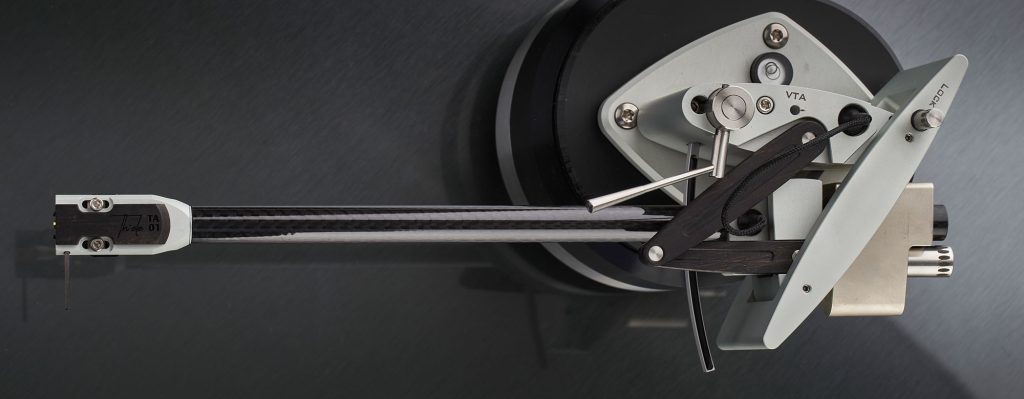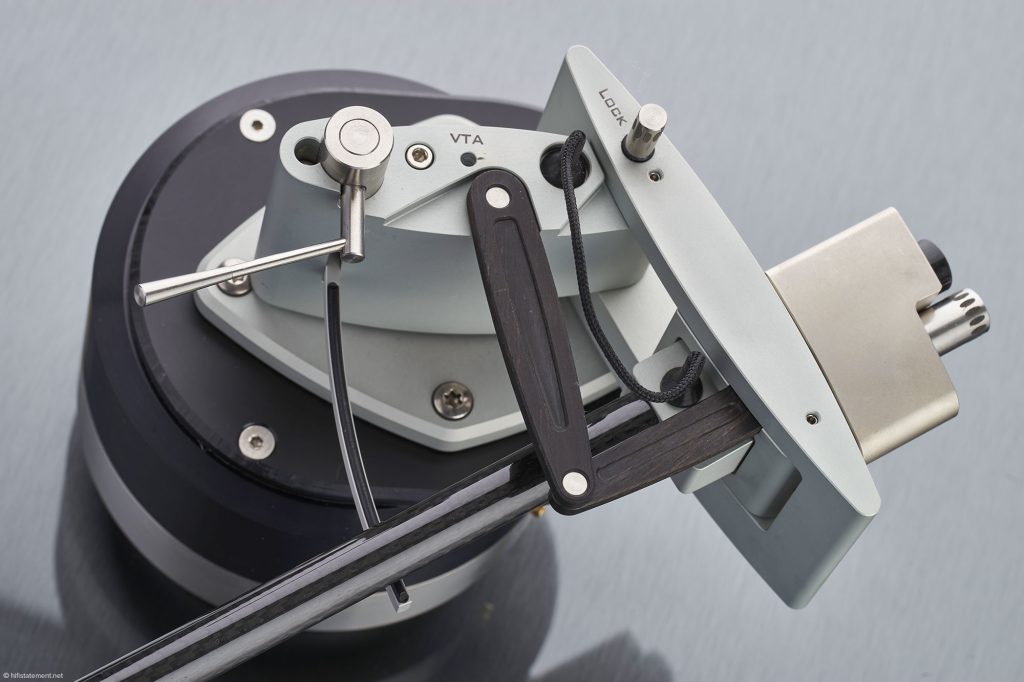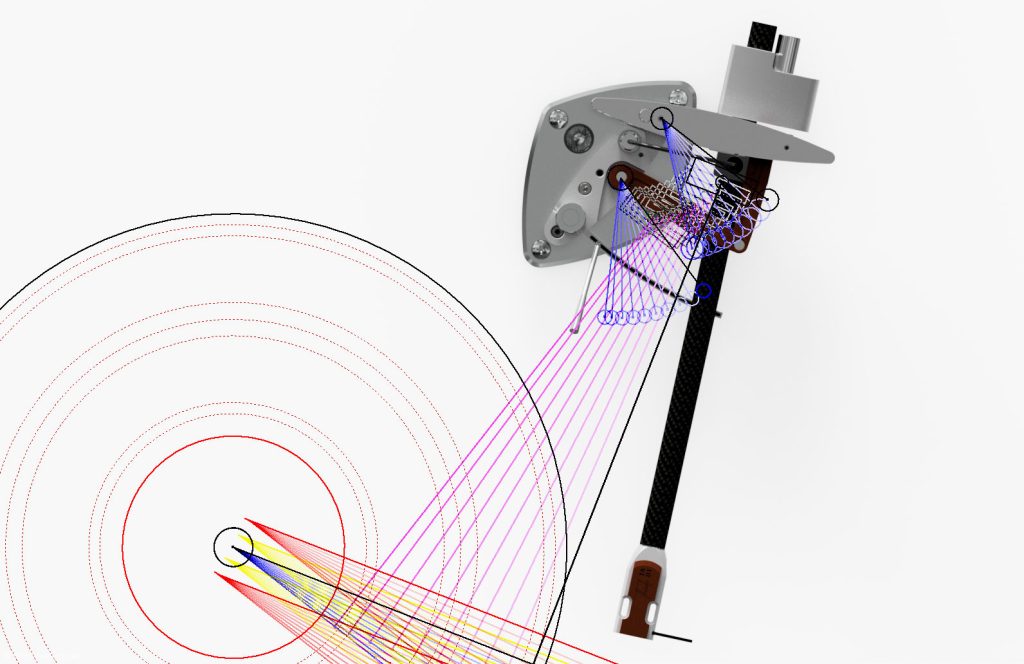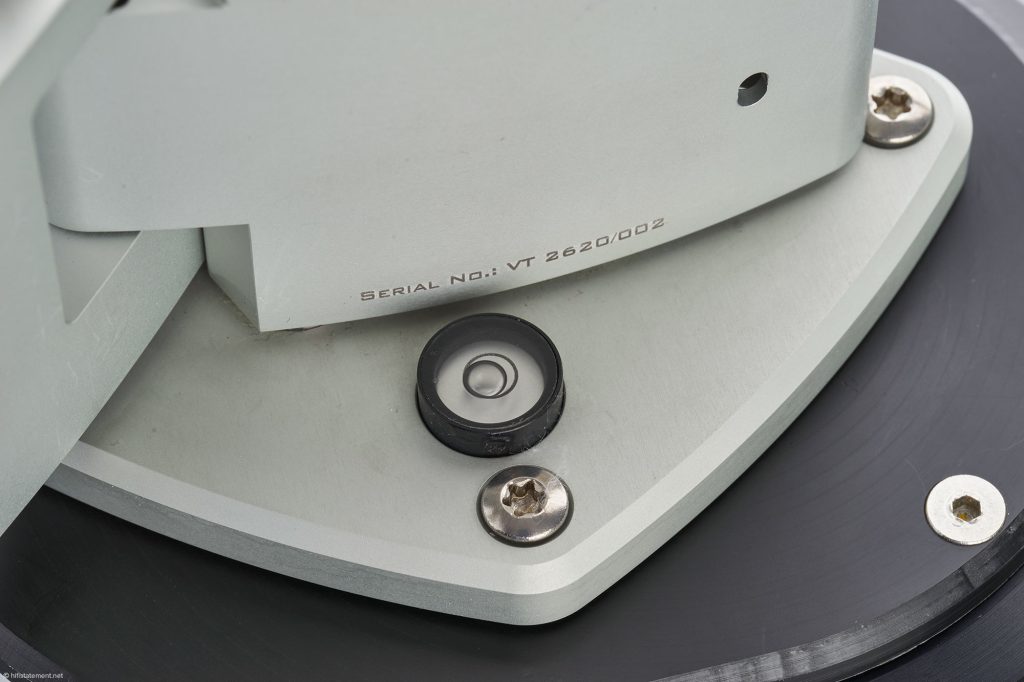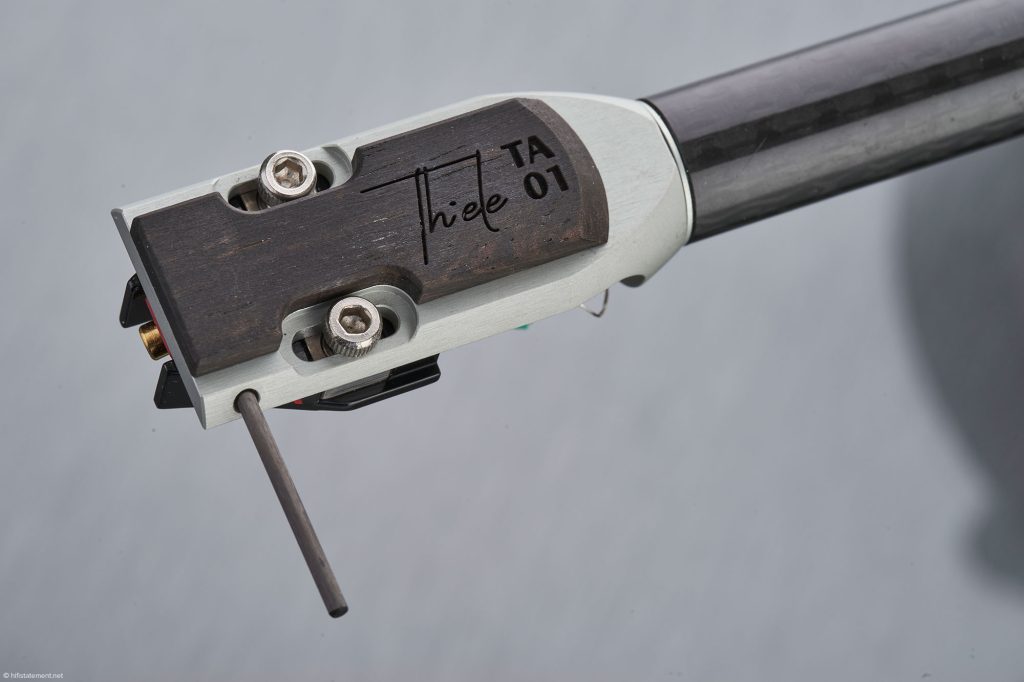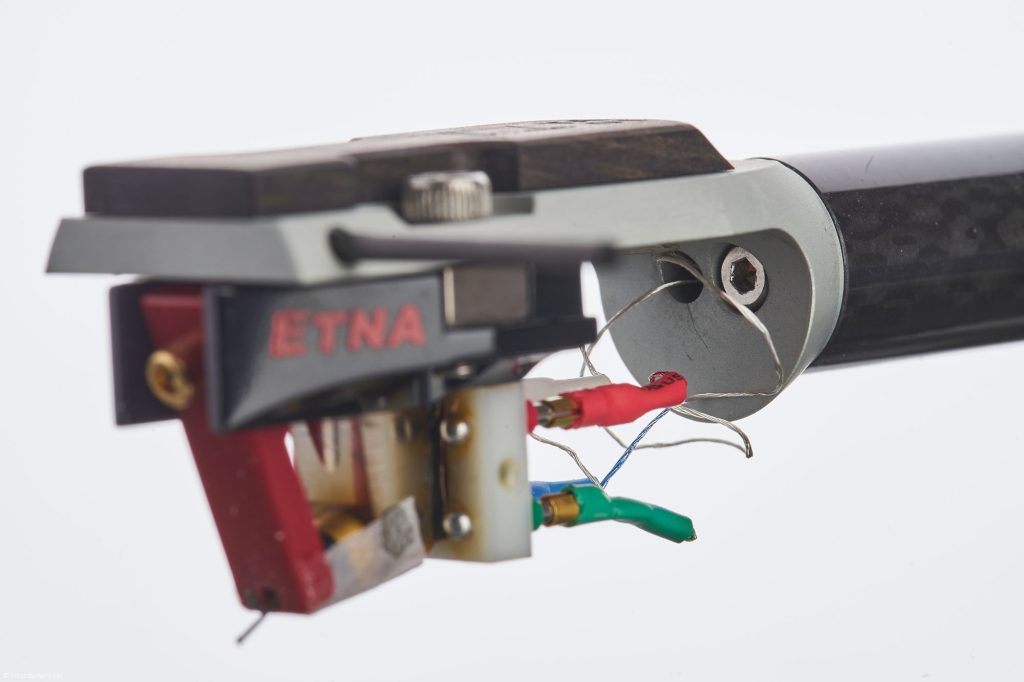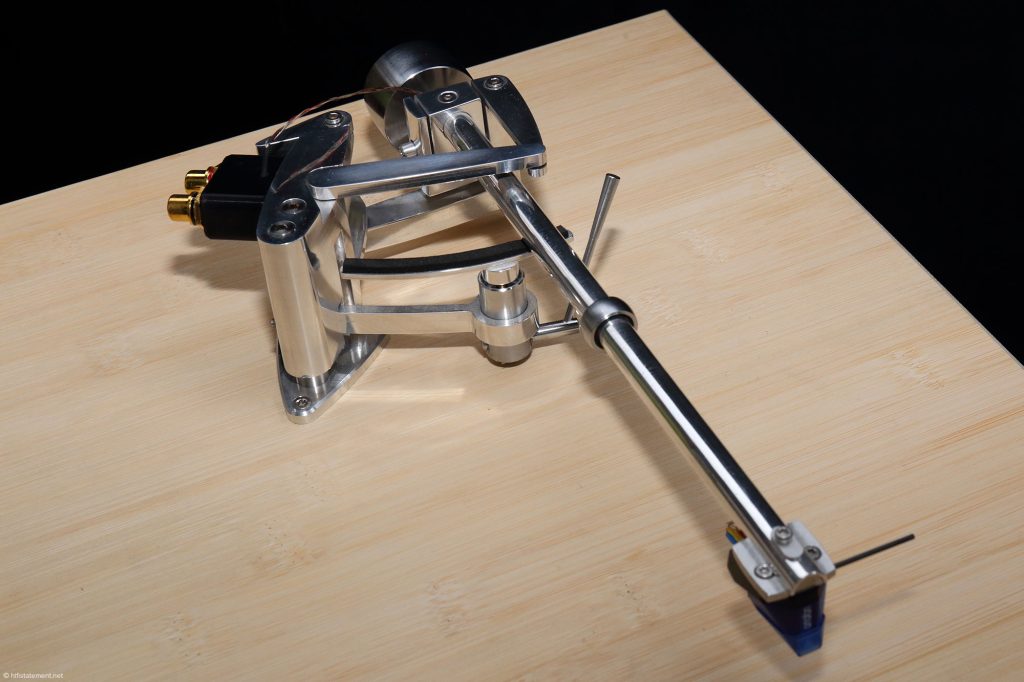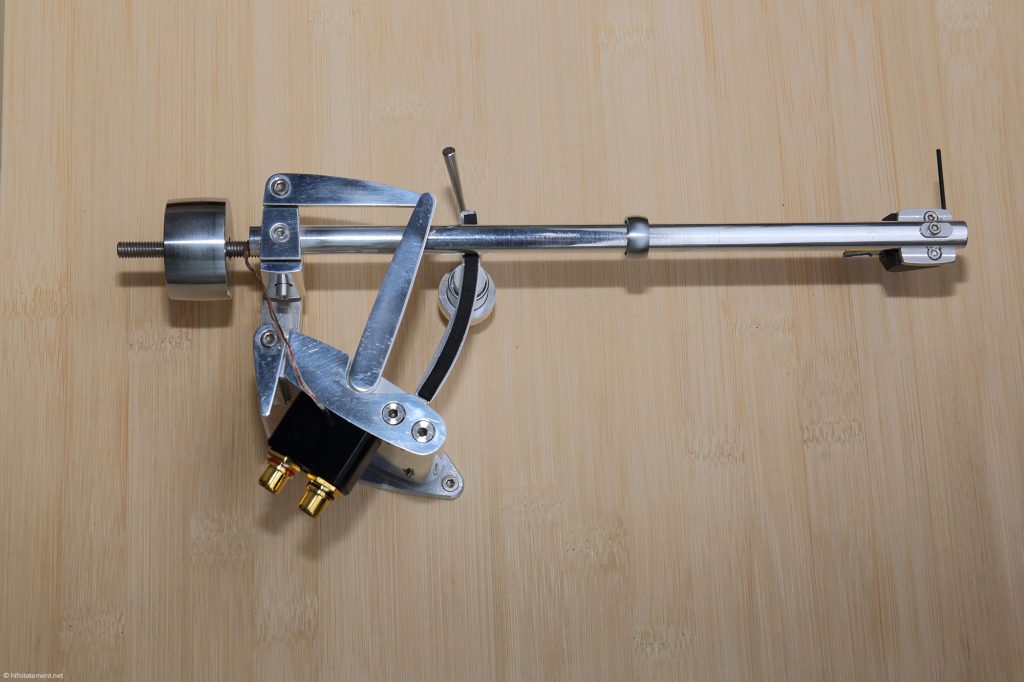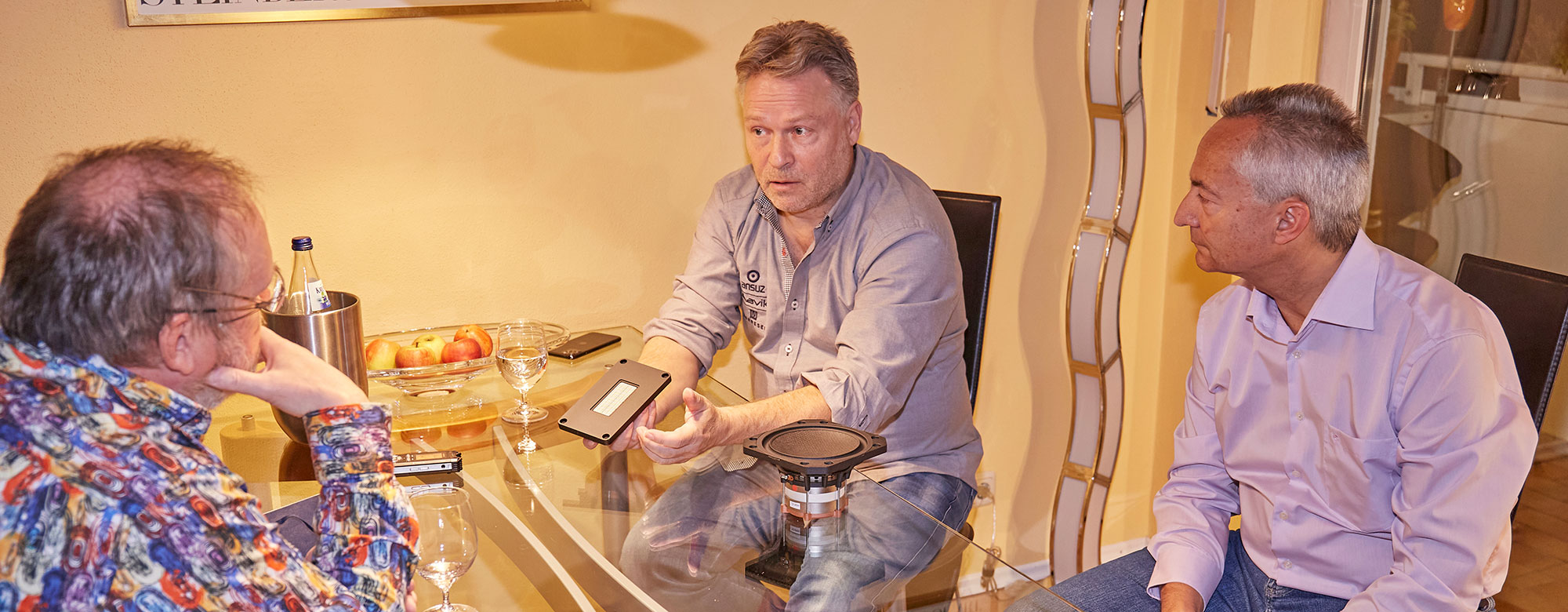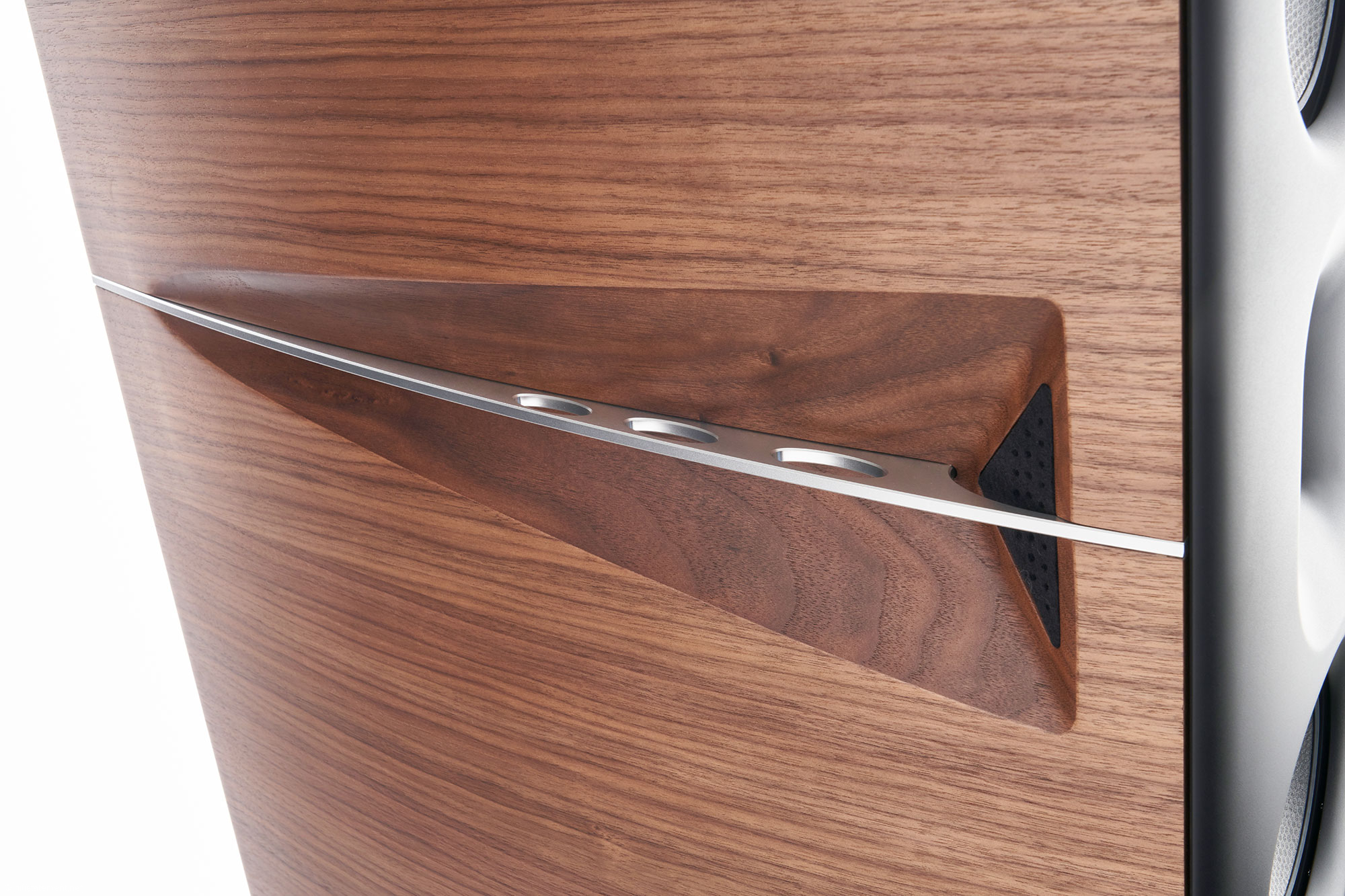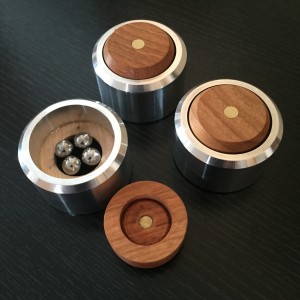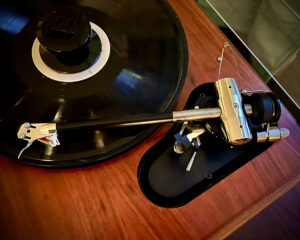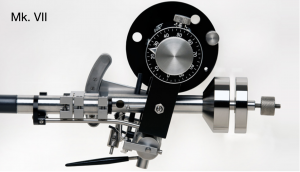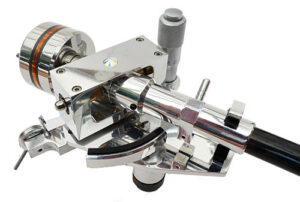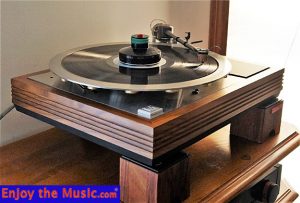The Thiele TA01 Tonearm
If you are a regular reader of Hifistatement, you probably will have come across the name Thiele. But even if you don't, it's most likely that you know or own a product that Helmut Thiele had a hand in creating. But it's only with this very special tonearm that he steps into the limelight with his name as a manufacturer.
After four terms as a student of mechanical engineering, Helmut Thiele realized that this subject wouldn't be his fulfilment. When he then discovered that much of what he enjoyed could be realized in the subject of industrial design, he not only changed his field of study, but also moved from the Ruhr University in Bochum to Krefeld—something the author, who finished his studies in the concrete desert of Bochum, could still envy today. In 1978, Helmut Thiele developed and designed a turntable as his thesis. He also sought for inspiration at the Audio Forum in Duisburg. On his first visit, he actually only wanted to stop by in the morning, but then stayed until closing time. The lively exchange with Alfred Rudolph led, among other things, to Helmut Thiele machining the prototypes of the first spherical horns for the ion tweeter out of bronze according to Rudolph's drawings, handcrafting the first GRP horns for various midrange drivers and also building the bass horn for the first Excalibur speaker system. Helmut Thiele also created the design of the Michaelson & Austin M100 and the TVP-X preamplifier. At that time, Audio Forum or ATR respectively was the German distributor for the English tube specialists—and, by the way, the author was the proud owner of a TVA 1 at the time.
With the stylus in the lead-out groove, the tonearm would have reached this position
From the mid-80s, Helmut Thiele worked exclusively in a design office. About a decade later—he had become self-employed in the meantime—Karl-Heinz Fink asked him if he would design ALR's loudspeaker series. From 1995 onwards, commissions followed from Heco, Magnat, MacAudio, Castle, and Tannoy—among others—to stay with loudspeaker manufacturers for once. From then on, his occupation for industry and HiFi manufacturers was more or less balanced. In 2008, Helmut Thiele, Karl-Heinz Fink, and Walter Fuchs developed the TD 309 for Thorens. At the High End 2009, the designer came across the Thales tonearm, and immediately his own ideas for a pivoted linear tracking tonearm emerged. In his tonearm developments so far, resonance control and dissipation have always had the highest priority. And to achieve this, a tonearm tube of high rigidity that's also force-fitting to the headshell was required. Implementing a bearing at this point was therefore not an option. The parallelogram necessary for an almost tangential tracking with its four points, which are relatively far apart from each other—the maximum tracking angle error of the TA01 is a vanishingly small value of 0.036 degrees—had therefore to be moved completely to the end of the tonearm tube.
The mechanics of the arm in its rest position
During a visit to Essen in 2013 to the offices shared by Fink Audio Consulting and the design studio dwx Thiele, I can still remember holding the prototype of the TA01 in my hands—which Helmut Thiele also brought along for a few photos during his visit to Gröbenzell. At that time, the tangentially tracking aluminum arm still had the slideable counterweight that, as measured with a laser device, had proved very effective in damping resonances during the development of the arm tube for the TD 309. In the TA01, Helmut Thiele now uses two concentric carbon fiber tubes. The space between the two, which accounts for 0.5 millimeters, is filled with a gel. This construction combines fast sound dissipation with a low self-resonance. Unlike the prototype, the cantilever that supports the tonearm bearing now happens to be a closed frame with significantly more mass. Helmut Thiele explains that this design increases both the stability of the construction and improves resonance dissipation.
This is what the bearing section looks like when the stylus has tracked about half of the record
In order to avoid the cantilever of the cartridge having to move the entire mass, he somewhat alleviates the process by having the arm tend towards the center of the turntable platter by means of the design itself. This kind of "preloading" is achieved by aligning the mounting plate accordingly. He adjusts the integrated bubble level in such a way that when it is perfectly in the middle position, it does not indicate that the platform is "standing level," but is aligned with the optimal inclination. While the adjustment in an almost right angle in relation to the arm must not be changed under any circumstances, the adjustment in the longitudinal direction of the tonearm can be varied in such a way that the cantilever does not move to the right or left when the needle is lowered into the groove. This ensures that harmful lateral forces have no impact on the cantilever and the coils move centrically in the magnetic field.
The geometry and the finished arm
The two levers that pull the frame with the tonearm bearing into position are made by Helmut Thiele from solid ebony. In the counterweight, there is an inlay made of the same material to dampen vibrations. A small ebony plate is also glued onto the aluminum headshell. It damps the headshell according to the principle of "Constrained Layer Damping." The two hard materials are damped by the viscoelastic glue, as the shearing forces that occur dissipate the energy of the resonance. Let's take another look at the force-fitting connection between the headshell and the tonearm tube: A negative cone made of metal is connected to the latter using a two-component glue, the former ends in a positive cone and is tightened with a screw at the end of the headshell. When it comes to resonance dissipation, this certainly is an ideal solution. However, if the azimuth needs to be adjusted as finely as possible, tightening a screw in the just-aligned headshell is unfortunately a bit fiddly. In case of doubt, Helmut Thiele opted for sonic advantages instead of simple handling: Brutally fixed instead of clatterly loose is the maxim here. And those who change their cartridge every couple of years or have it installed by their dealer will gladly overlook this small shortcoming in terms of operational comfort.
The bubble level does not indicate whether the arm is "standing level," but whether the mounting plate has reached the inclination specified by the developer
I received the arm for a try-out at the beginning of the year, and also reported briefly on it. Since then it has undergone two modifications: I already mentioned that the name has been changed from "VERO" to "Thiele TA01" with the addition "ZERO Tracking Error Tonearm" for reasons of trademark protection, and also that Helmut Thiele has developed a turntable to match the arm—which I will probably be able to introduce to you in autumn. In this combo, the tonearm cables lead to XLR sockets on the back of the chassis. But how does a TA01 mounted on an "alien" turntable make electrical contact with its companions? Since the designer has a fully equipped precision mechanics workshop at his command, he was able to respond to the author's request in this case and to implement a so-called SME connector on the underside of the arm. For the series models, however, there will be two terminals available: the TM01 with XLR sockets and the TM02 with SME as well as Cinch connectors, so that no changes have to be made to the turntable below the mounting plate of the arm. By the way, if everything works out as planned, the review on the Thiele turntable will include not only another TA01 but also a very high-quality, new Ortofon cartridge as well as a Blue Amp Model 42 MK III.
The headshell is steadied with a small ebony plate according to the principle of Constrained Layer Damping
But let's go back to the Thiele TA01 installed to my Brinkmann LaGrange. As could be already seen during the initial presentation of the tonearm, the rather large-scaled mounting plate of the pivoted tangential tonearm does not fit completely on one of the interchangeable base plates. Helmut Thiele therefore made a special adapter to suit the LaGrange base plate to enable me to mount his arm effortlessly and also align it exactly on the turntable thanks to the template provided. The adjustment of the tonearm height, its locking and the height of the tonearm lift can be easily performed with one and the same screwdriver. The counterweight, which is also responsible for adjusting the tracking force, is smoothly brought into position by means of a screw. The handling and workmanship of the TA01 are excellent—except for a small restriction in the azimuth adjustment. An aluminum elbow with an adjustable tip is included for aligning the overhang. The elbow is held onto the headshell and the cartridge is moved in the elongated holes until the stylus faces the tip: This is innovative, unusual and at the same time extremely simple, at the latest after having changed the cartridge for the third time.
The Allen screw next to the cable aperture is used for adjusting the azimuth
The first cartridge I installed to the headshell, which was still labelled "Vero" at the time, was Einstein's The Pickup, which copes well with medium to heavy arms. This is also the case in the TA01. It demonstrates its special skills in regard to dynamics and spatial imaging, spoils with rich timbres and, although the tonearm cables have not yet been burnt in even a single bit, one is able to trace sustaining tones for a very long time. The rendition of details is just as convincing. Even at first audition it's clear that the Thiele TA01 classifies for one of the top tonearms. But the delight was not to last very long: The arm had to make its way back to the manufacturer to get an ebony plate carrying the correct name.
The counterweight, which is also used to set the tracking force, is moved smoothly with a screw
After receiving it back, I installed a Lyra Etna on the TA01, which, in addition to an extremely good performance in all disciplines, is particularly inspiring because of its enthusiastic performance. And with the Thiele TA01 it's no different. When testing the Velodyne Digital Drive Plus 10 subwoofers, the combination was able to prove not only its enormous potential in the low frequency range with Peter Gabriel's "Sky Blue"—a test track introduced by Audio-Reference's Max Merk, who had brought the Velodyne's to Gröbenzell—but also its immunity to massive low-frequency sound waves wafting through my listening room. There is nothing on the TA01 that has too much slackness or could be triggered to resonate for any other reason. Even in what is probably his most complex tonearm design to date, Helmut Thiele has managed to control and dissipate resonances excellently. After experiencing the electronic subsonic lows in "Sky Blue," Max Merk and I then treated ourselves to Jonas Hellborg's "Drone" and "It's The Pits, Slight Return" from the album Elegant Punk, similarly strolling through low frequencies, but handmade. I remember having listened to the last track in particular as clear and nuanced, yet enthralling.
After loosening the shiny looking screw, the height of the tonearm can be finely adjusted with a screwdriver in the opening to its right. The opening on the left is used to adjust the height of the lift.
Lately I have received (too?) many components for testing that weren't burnt-in. So it made much sense to let cartridge, phono stage and loudspeakers (and cables) collect hours of operation in conjunction with the internal wiring of the TA01. In addition to my test records, I came also to listen to some forgotten albums. When breaking-in the Børresen 01 Silver Supreme and the Ansuz Speakz D2, it happened to be the title track of the album Dawn Dance by Steve Eliovsen and Collin Walcott that particularly impressed me with its colorful high frequency range with regard to the differentiation of the three guitars recorded in multi-track mode. Also Paul Motian's album Le Voyage captivated me with its extremely fine rendering of sometimes delicate, sometimes energetic cymbal sounds. Charles Brackeen's soprano saxophone, which can be slightly aggressive with other tonearm/cartridge alliances—and transducers as well—has now got enough power, but never topples into nervousness—even though the Lyra Etna is certainly not one of the most restrained sounding cartridges around. Afore I've already given lots of credits to the special abilities of the Lyra and TA01 combo in the bass range, but perhaps I should stop focusing on individual disciplines: This duo plays in real harmony: What a great, holistic musical experience!
Shown here is the prototype of the tonearm that fascinated the author already about eight years ago
For testing the Soundsmith Strain Gauge in combination with two SBoosters, I installed this cartridge system, which currently is unique in the way it operates, in the Thiele TA01 instead of Einstein's short-scaled The Tonearm. The Soundsmith, which certainly needs a stable arm with some mass, conjugated perfectly with the TA01. The fact that I heard it better than ever with Zakir Hussain's rediscovered test record Making Music probably has to do with the subwoofers newly integrated into the chain as well as the improved power supply for the Strain Gauge's power control unit, but would certainly not have been possible if the Thiele had not allowed the cartridge to track accurately, which is quite demanding in this respect. So the positive results I got from Einstein's The Pickup and the Etna are anything but coincidental. To burn Aavik's phono stage R-580 in and extract my first sonic impressions from it, I let the Lyra Etna return into the headshell of the Thiele. With Albéniz-Frühbeck de Burgos' Suite Española and Dick Schory's "Buck Dance" and "Duel On The Skins," the combo fascinates regarding the size of the soundstage, its enthusiasm and vibrancy. For me, there isn't the slightest aspect for criticism! And that's why I leave the Etna in the TA01 when Helmut Thiele announces his visit to Gröbenzell.
The prototype as seen from top: The past eight years have brought a lot of further developments
I then had the developer demonstrate how he "tilts" the mounting plate to ensure that no lateral forces are acting on the cantilever and it reaches a centered position under the cartridge body. The setting is no different from the one I had found before. You really don't need to be an analogue specialist with years of experience to get the TA01 performing excellently. Of course, the visually very appealing, well-made instruction manual also plays a part in this. Since Helmut Thiele had no sonically reasoned objections against the analogue source and also the rest of my system, we had time to play each other a few of our favorite records. The creator, of course, does not travel to such an appointment without some meaningful records of his own. Despite enjoying the music, we now and then inserted a chat about Helmut Thiele's (HiFi) career, and the constructive characteristics of his tonearm.
What a pleasant day this is, full of stimulating conversation and musical delight! I am already looking forward to a visit to the Duisburg based manufactory.
Helmut Thiele elucidates the construction of his tonearm
Statement
Rarely have I listened to a tonearm as intensively and for as long as this one. It helps all the cartridges that I used to achieve a supreme sonic performance. It restrains itself completely, is easy to set up and adjust, is visually reminiscent of modern architecture, and is a fine example for extremely high-quality craftmanship. With the TA01, Helmut Thiele has created an innovative tonearm one would dream about.
MY LISTENING EQUIPMENT
Source
- Brinkmann LaGrange with tube power supply
- Einstein The Tonearm 12"
- Transrotor Tamino, Lyra Etna, Soundsmith Strain Gauge (with Sbooster), Einstein The Pickup
- Einstein The Turntable's Choice (balanced)
- Audio Exklusiv R7
Power amp
- Einstein The Poweramp
Loudspeakers
- Goebel Epoque Aeon Fine
Subwoofer
- Velodyne Digital Drive Plus 10 (2x)
Cables
- Goebel High End Lacorde Statement, Audioquest Dragon HC, Tornado (HC) and Dragon Bi-Wiring, Swiss Cables, ForceLines
Accessories
- AHP sound module IV G, Audioquest Niagara 5000 and 1200, Synergistic Research Active Ground Block SE, HMS wall sockets, Blockaudio C-Lock Lite, Acapella bases, Acoustic System Feet and Resonators, Artesania Audio Exoteryc, SSC Big Magic Base, finite elemente Carbofibre° HD, Harmonix Real Focus and Room Tuning Disks, Audio Exklusiv Silentplugs
Specifications
- Tonearm
- Solid aluminum installation gauge
- Nylon drill template
- Cartridge adjustment gauge
- Allen key
- Bearing sphere
- Screw set
- Optional: additional counterweight
- Terminal TM01 with XLR connector
- Alternatively: TM02 with RCA/5-pin DIN connector
ATR – Audio Trade
HiFi Vertriebsgesellschaft mbH
Schenkendorfstrasse 29
45472 Mülheim/Ruhr, Germany
+49.208.882660




